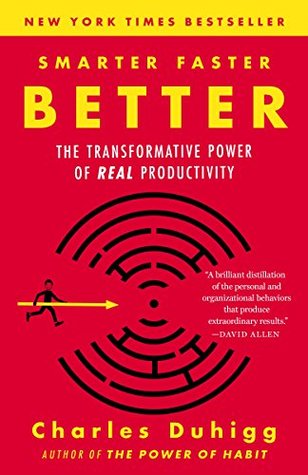More on this book
Community
Kindle Notes & Highlights
Read between
November 18 - December 8, 2016
First, all the members of the good teams spoke in roughly the same proportion, a phenomenon the researchers referred to as “equality in distribution of conversational turn-taking.” In some teams, for instance, everyone spoke during each task. In other groups, conversation ebbed from assignment to assignment—but by the end of the day, everyone had spoken roughly the same amount.
Davy liked this
· Flag
Suzanne
Second, the good teams tested as having “high average social sensitivity”—a fancy way of saying that the groups were skilled at intuiting how members felt based on their tone of voice, how people held themselves, and the expressions on their faces.
For psychological safety to emerge among a group, teammates don’t have to be friends. They do, however, need to be socially sensitive and ensure everyone feels heard. “The best tactic for establishing psychological safety is demonstration by a team leader,”
Suzanne and 1 other person liked this
Onstage, Bock brought up a series of slides. “What matters are five key norms,” he told the audience. Teams need to believe that their work is important. Teams need to feel their work is personally meaningful. Teams need clear goals and defined roles. Team members need to know they can depend on one another. But, most important, teams need psychological safety.
Suzanne and 1 other person liked this
To create psychological safety, Bock said, team leaders needed to model the right behaviors. There were Google-designed checklists they could use: Leaders should not interrupt teammates during conversations, because that will establish an interrupting norm. They should demonstrate they are listening by summarizing what people say after they said it. They should admit what they don’t know. They shouldn’t end a meeting until all team members have spoken at least once. They should encourage people who are upset to express their frustrations, and encourage teammates to respond in nonjudgmental
...more
Suzanne liked this
So one solution is writing to-do lists that pair stretch goals and SMART goals. Come up with a menu of your biggest ambitions. Dream big and stretch. Describe the goals that, at first glance, seem impossible, such as starting a company or running a marathon.
Motivation becomes easier when we transform a chore into a choice. Doing so gives us a sense of control.
Self-motivation becomes easier when we see our choices as affirmations of our deeper values and goals.
TO GENERATE MOTIVATION • Make a choice that puts you in control. If you’re replying to emails, write an initial sentence that expresses an opinion or decision. If you need to have a hard conversation, decide where it will occur ahead of time. The specific choice itself matters less in sparking motivation than the assertion of control. • Figure out how this task is connected to something you care about. Explain to yourself why this chore will help you get closer to a meaningful goal. Explain why this matters—and then, you’ll find it easier to start.
TO MAKE BETTER DECISIONS: • Envision multiple futures. By pushing yourself to imagine various possibilities—some of which might be contradictory—you’re better equipped to make wise choices. • We can hone our Bayesian instincts by seeking out different experiences, perspectives, and other people’s ideas. By finding information and then letting ourselves sit with it, options become clearer.
Julia liked this
TO MAKE TEAMS MORE EFFECTIVE: • Manage the how, not the who of teams. Psychological safety emerges when everyone feels like they can speak in roughly equal measure and when teammates show they are sensitive to how each other feel. • If you are leading a team, think about the message your choices reveal. Are you encouraging equality in speaking, or rewarding the loudest people? Are you showing you are listening by repeating what people say and replying to questions and thoughts? Are you demonstrating sensitivity by reacting when someone seems upset or flustered? Are you showcasing that
...more
TO MANAGE OTHERS PRODUCTIVELY: • Lean and agile management techniques tell us employees work smarter and better when they believe they have more decisionmaking authority and when they believe their colleagues are committed to their success. • By pushing decision making to whoever is closest to a problem, managers take advantage of everyone’s expertise and unlock innovation. • A sense of control can fuel motivation, but for that drive to produce insights and solutions, people need to know their suggestions won’t be ignored and that their mistakes won’t be held against them.
TO ENCOURAGE INNOVATION: • Creativity often emerges by combining old ideas in new ways—and “innovation brokers” are key. To become a broker yourself and encourage brokerage within your organization: • Be sensitive to your own experiences. Paying attention to how things make you think and feel is how we distinguish clichés from real insights. Study your own emotional reactions. • Recognize that the stress that emerges amid the creative process isn’t a sign everything is falling apart. Rather, creative desperation is often critical: Anxiety can be what often pushes us to see old ideas in new
...more
TO ABSORB DATA BETTER: • When we encounter new information, we should force ourselves to do something with it. Write yourself a note explaining what you just learned, or figure out a small way to test an idea, or graph a series of data points onto a piece of paper, or force yourself to explain an idea to a friend. Every choice we make in life is an experiment—the trick is getting ou...
This highlight has been truncated due to consecutive passage length restrictions.


